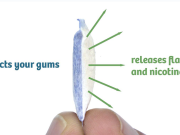“With or without nicotine, flavoured vapes pose potential risks for the brain and addiction,” said lead study author Skylar Cooper. Cooper, who is a research technician Austin Akers and her research team, split study subjects (mice) in 3 groups. One group was given nicotine, another the green apple flavourant farnesene or both, and the third a saline solution.
The researchers found that Farnesene was rewarding by itself, as mice chose the farnesene chamber over the saline chamber. However, farnesene was also found to enhance the reward level even more when mixed with nicotine.
Further research required into the impact of flavours on nicotine addiction
Cooper plans to conduct further research on the impact that flavour compounds have on nicotine addiction, focusing specifically on the impacts that these substances have on the adolescent brain.”Given a consistent rise in adolescent use of these products and the addiction crisis we are facing throughout this country, it is vital to identify a role that these flavours have in nicotine addiction and how this may impact the developing brain,” she said.
The research team went on to look into how farnesene changed nicotine receptor expression and neuron activation, and found that when consumed on its own farnesene activated nicotinic receptors only partially. On the other hand when farnesene was mixed with nicotine, the activation in these receptors was enhanced further. Additionally, noticed the researchers, farnesene seemed to increase the proportion of high- to low-sensitivity receptors.
Read Further: EurekAlert












